There are not so many animals that start with I. But even in this small number, you will find diversity in it. From iconic creatures like the Irukandji Jellyfish and Ivory-billed Woodpecker to charming companions like the Italian Greyhound and the industrious Ivy Bee, you will meet with so many amazing creatures.
You can jump to related article info about animals with fun facts by Click Here.
So take a look at the 30+ animals with images and fascinating details about their habits, habitats, and more.
Animals that Start with I
- Ibex
- Ibis
- Ichneumon
- Iguana
- Impala
- Indian Elephant
- Indochinese Tiger
- Indri
- Insect
- Irish Wolfhound (dog breed)
- Irukandji Jellyfish
- Irukandji Shark
- Isopod
- Italian Greyhound (dog breed)
- Ivory-billed Woodpecker (considered extinct or possibly extinct)
- Ibisbill
- Icefish
- Inca Tern
- Indigo Bunting
- Inland Taipan (snake)
- Inshore Hagfish
- Indian Palm Squirrel
- Indian Rhinoceros
- Indus River Dolphin
- Insectivora (order of mammals including shrews and moles)
- Imperial Shag (bird)
- Island Canary
- Isopoda (order of crustaceans)
- Imperial Eagle
- Indian Cobra (snake)
- Indian Peafowl (Peacock)
- Irish Moiled (cattle breed)
- Irish Setter (dog breed)
- Iberian Lynx
- Idaho Giant Salamander
- Ibizan Hound (dog breed)
- Ichthyosaur
Ibex
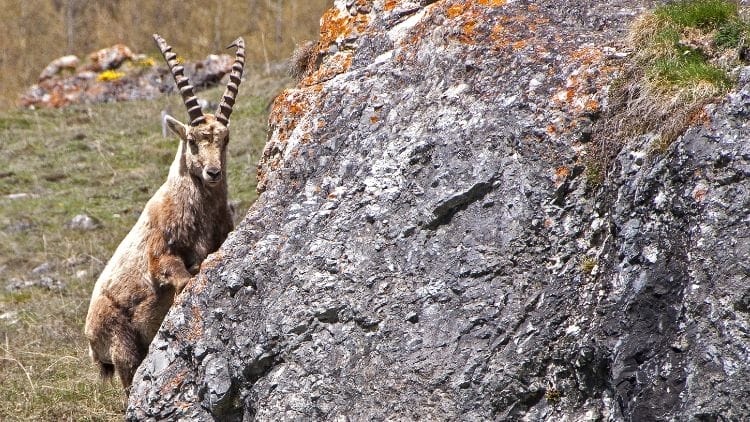
| Scientific Name | Capra |
| Special Habit | Climbing steep terrains |
| Place of Origin | Various mountain ranges worldwide |
| Size | Medium to large |
| Commonly Found In | Mountainous regions |
| Lifespan | Around 15 years |
| Diet | Grasses, herbs, shrubs |
| Reproduction | Mating season in late fall |
| Conservation Status | Varies by species |
Ibex are excellent climbers, using their specialized hooves to navigate steep and rocky terrain with ease.
Ibis
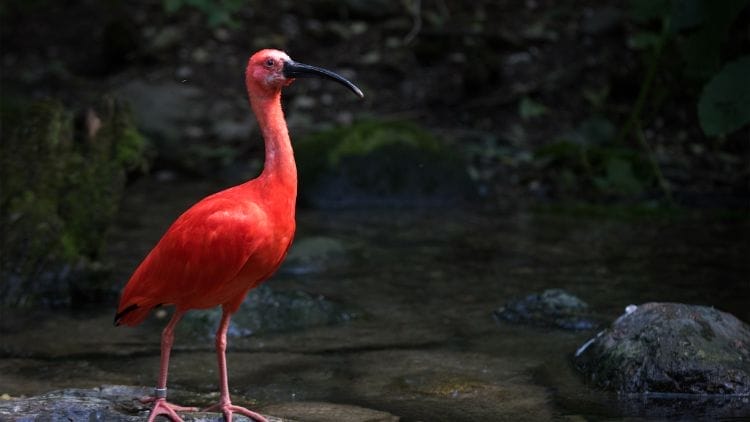
| Scientific Name | Threskiornithidae |
| Special Habit | Wading in shallow waters |
| Place of Origin | Worldwide, except Antarctica |
| Size | Small to large |
| Commonly Found In | Wetlands, marshes, and lakeshores |
| Lifespan | 15 to 20 years |
| Diet | Insects, small fish, and crustaceans |
| Reproduction | Nests in colonies |
| Conservation Status | Varies by species |
Some ibis species are known for their distinctive long bills, which they use to probe the mud for food.
Ibizan Hound
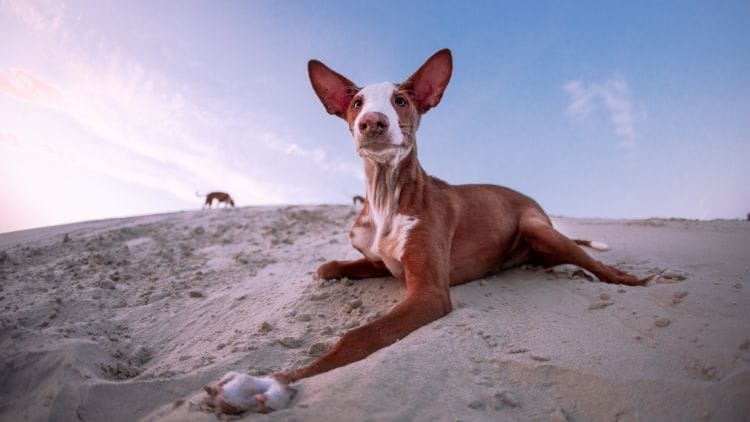
| Scientific Name | Canis lupus familiaris |
| Special Habit | Swift running and agility |
| Place of Origin | Spain (Ibiza) |
| Size | Medium |
| Commonly Found In | Hunting and racing events |
| Lifespan | 12 to 14 years |
| Diet | High-quality dog food |
| Reproduction | Average litter size of 6 to 8 puppies |
| Conservation Status | Not applicable |
The Ibizan Hound is known for its elegant appearance and keen hunting instincts, making it a prized companion for hunters.
Icadyptes
| Scientific Name | Icadyptes salasi |
| Special Habit | Flightless, swimming |
| Place of Origin | Peru |
| Size | Penguin-sized |
| Commonly Found In | Fossil remains in marine sediments |
| Lifespan | Extinct species |
| Diet | Fish and marine life |
| Reproduction | Limited information available |
| Conservation Status | Extinct |
Icadyptes was a prehistoric penguin that lived around 36 million years ago, showcasing the diversity of ancient avian species.
Icelandic Sheepdog
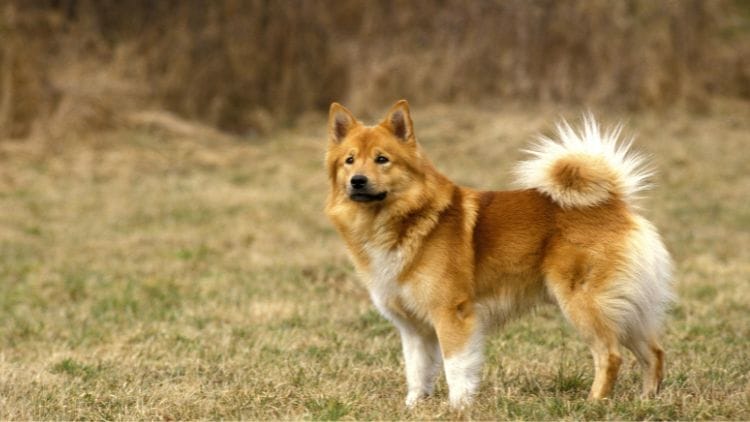
| Scientific Name | Canis lupus familiaris |
| Special Habit | Herding livestock |
| Place of Origin | Iceland |
| Size | Small to medium |
| Commonly Found In | Farms and rural areas |
| Lifespan | 12 to 15 years |
| Diet | Balanced dog diet |
| Reproduction | Average litter size of 4 to 6 puppies |
| Conservation Status | Not applicable |
The Icelandic Sheepdog is known for its friendly nature and thick double coat, providing protection in harsh weather conditions.
Ichthyosaurus
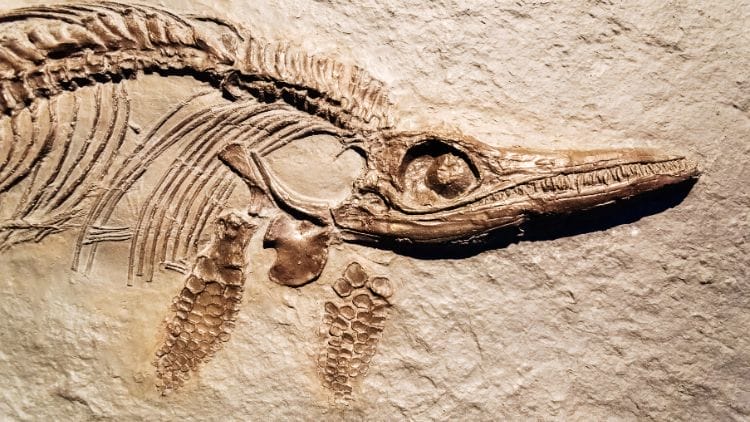
| Scientific Name | Ichthyosaurus |
| Special Habit | Marine reptile, swimming |
| Place of Origin | Oceans worldwide |
| Size | Medium to large |
| Commonly Found In | Ancient seas, Jurassic period |
| Lifespan | Estimated around 25 years |
| Diet | Fish and squid |
| Reproduction | Live birth, not laying eggs |
| Conservation Status | Extinct |
Ichthyosaurus was not a dinosaur but a marine reptile resembling a dolphin, adapted to an aquatic lifestyle.
Ichthyostega
| Scientific Name | Ichthyostega |
| Special Habit | Early tetrapod, amphibious |
| Place of Origin | Late Devonian period, Greenland |
| Size | Medium-sized |
| Commonly Found In | Ancient freshwater habitats |
| Lifespan | Extinct species |
| Diet | Fish and small aquatic creatures |
| Reproduction | Limited information available |
| Conservation Status | Extinct |
Ichthyostega is considered one of the first creatures to transition from water to land during the evolution of vertebrates.
Iguana

| Scientific Name | Iguana |
| Special Habit | Arboreal, basking in the sun |
| Place of Origin | Central and South America |
| Size | Small to large, depending on species |
| Commonly Found In | Forests, deserts, and coastal areas |
| Lifespan | 10 to 20 years |
| Diet | Vegetarian, eating leaves and fruits |
| Reproduction | Lays eggs in nests |
| Conservation Status | Varies by species |
Iguanas have a unique third eye on the top of their head, known as the parietal eye, which helps in detecting predators from above.
Iguanodon
| Scientific Name | Iguanodon |
| Special Habit | Bipedal herbivore, walking on hind limbs |
| Place of Origin | Europe, Asia, and North America |
| Size | Large |
| Commonly Found In | Early Cretaceous period |
| Lifespan | Extinct species |
| Diet | Herbivorous, eating plants |
| Reproduction | Limited information available |
| Conservation Status | Extinct |
Iguanodon was one of the first dinosaur species to be scientifically recognized and played a significant role in shaping early dinosaur studies.
IMG Boa Constrictor
| Scientific Name | Boa constrictor (subtype not specified) |
| Special Habit | Constricting prey, nocturnal |
| Place of Origin | Various tropical regions |
| Size | Medium to large |
| Commonly Found In | Forests, jungles, and grasslands |
| Lifespan | 20 to 30 years |
| Diet | Small mammals, birds, and reptiles |
| Reproduction | Gives birth to live young |
| Conservation Status | Varies by species |
Boa constrictors are known for their unique method of hunting—squeezing and suffocating their prey before swallowing it whole.
Immortal Jellyfish
| Scientific Name | Turritopsis dohrnii |
| Special Habit | Ability to revert to juvenile form |
| Place of Origin | Worldwide oceans, particularly in warmer climates |
| Size | Small, bell-shaped |
| Commonly Found In | Open ocean waters |
| Lifespan | Potentially immortal through transdifferentiation |
| Diet | Plankton and small organisms |
| Reproduction | Alternates between sexual and asexual phases |
| Conservation Status | Not evaluated |
The Immortal Jellyfish is unique for its ability to reverse aging, turning back into a juvenile form, potentially making it biologically immortal.
Impala
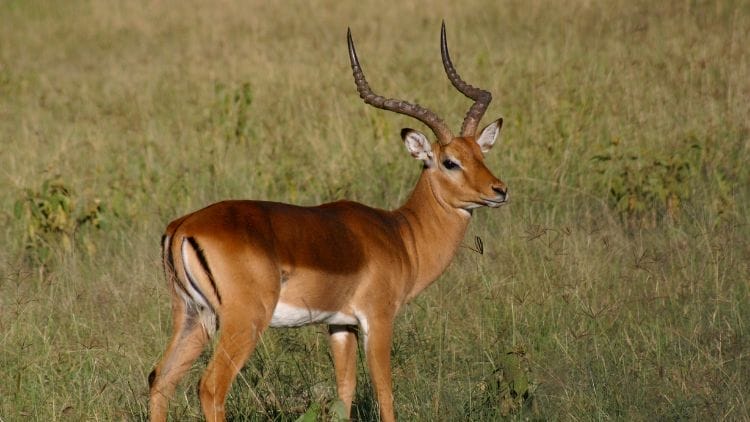
| Scientific Name | Aepyceros melampus |
| Special Habit | Swift and agile runners |
| Place of Origin | Sub-Saharan Africa |
| Size | Medium-sized antelope |
| Commonly Found In | Savannas and grasslands |
| Lifespan | 12 to 15 years |
| Diet | Herbivorous, grazing on grasses |
| Reproduction | Mating season with prominent mating displays |
| Conservation Status | Least Concern |
Impalas are known for their exceptional jumping ability, capable of leaping up to 10 feet in height and covering large distances to escape predators.
Imperial Moth
| Scientific Name | Eacles imperialis |
| Special Habit | Nocturnal, attracted to lights |
| Place of Origin | North America |
| Size | Large, wingspan up to 7 inches |
| Commonly Found In | Deciduous forests and gardens |
| Lifespan | About one week as an adult |
| Diet | Larvae feed on various deciduous trees |
| Reproduction | Lays eggs on host plants |
| Conservation Status | Not evaluated |
The Imperial Moth is known for its strikingly beautiful appearance, with wings adorned in vibrant patterns, making it a fascinating nocturnal insect.
Inchworm
| Scientific Name | Geometridae family |
| Special Habit | Looping movement resembling inching |
| Place of Origin | Worldwide, diverse habitats |
| Size | Small, caterpillar form |
| Commonly Found In | Trees, plants, and shrubs |
| Lifespan | Varies by species, typically a few weeks |
| Diet | Feeds on leaves of host plants |
| Reproduction | Develops from eggs to larvae to pupae |
| Conservation Status | Not evaluated |
Inchworms are not worms but caterpillars of moths, showcasing a distinctive looping movement that adds a unique charm to their behavior.
Indian Cobra
| Scientific Name | Naja naja |
| Special Habit | Venomous, hooding when threatened |
| Place of Origin | Indian subcontinent |
| Size | Medium-sized snake |
| Commonly Found In | Grasslands, forests, and urban areas |
| Lifespan | 20 years or more in captivity |
| Diet | Carnivorous, preying on rodents and other small animals |
| Reproduction | Lays eggs, typically in the monsoon season |
| Conservation Status | Not evaluated |
Indian Cobras are known for their iconic hooding display, expanding their neck ribs to appear larger and more intimidating when feeling threatened.
Indian Elephant
| Scientific Name | Elephas maximus indicus |
| Special Habit | Social animals, strong family bonds |
| Place of Origin | Indian subcontinent |
| Size | Large, with males being larger |
| Commonly Found In | Forests and grasslands |
| Lifespan | 60 to 70 years |
| Diet | Herbivorous, consuming grasses, fruits, and bark |
| Reproduction | Female elephants have a gestation period of around 22 months |
| Conservation Status | Endangered |
Indian Elephants are highly intelligent and display a remarkable memory, crucial for navigating their extensive home ranges.
Indian Giant Squirrel

| Scientific Name | Ratufa indica |
| Special Habit | Arboreal, leaping between trees |
| Place of Origin | Indian subcontinent |
| Size | Large, with a bushy tail |
| Commonly Found In | Tropical and subtropical forests |
| Lifespan | Up to 20 years |
| Diet | Omnivorous, feeding on fruits, nuts, and insects |
| Reproduction | Gives birth to one to two young per breeding season |
| Conservation Status | Near Threatened |
Indian Giant Squirrels are known for their vibrant fur colors, ranging from shades of brown to orange and even purple in some regions.
Indian Palm Squirrel
| Scientific Name | Funambulus palmarum |
| Special Habit | Diurnal, active during the day |
| Place of Origin | Indian subcontinent |
| Size | Small, with distinctive three stripes on the back |
| Commonly Found In | Urban and rural areas, parks, and gardens |
| Lifespan | Around 4 to 5 years |
| Diet | Omnivorous, consuming fruits, nuts, and insects |
| Reproduction | Gives birth to three to four young in a litter |
| Conservation Status | Least Concern |
Indian Palm Squirrels are known for their acrobatic abilities and can make impressive leaps between trees and structures.
Indian python
| Scientific Name | Python molurus |
| Special Habit | Ambush predators, constricting prey |
| Place of Origin | Indian subcontinent |
| Size | Large, one of the longest snakes in the world |
| Commonly Found In | Forests, grasslands, and marshes |
| Lifespan | 20 to 30 years |
| Diet | Carnivorous, preying on mammals and birds |
| Reproduction | Lays eggs, incubating them until hatching |
| Conservation Status | Least Concern |
Indian Pythons are excellent swimmers and are known to inhabit areas near water, where they can hunt a variety of prey.
Indian Rhinoceros
| Scientific Name | Rhinoceros unicornis |
| Special Habit | Herbivorous grazers, solitary or in small groups |
| Place of Origin | Indian subcontinent |
| Size | Large, with distinctive single horn |
| Commonly Found In | Grasslands and swamps |
| Lifespan | 35 to 45 years |
| Diet | Herbivorous, feeding on grasses, fruits, and aquatic vegetation |
| Reproduction | Single calf born after a gestation period of around 16 months |
| Conservation Status | Vulnerable |
Indian Rhinoceroses are known for their thick skin folds, giving them an armored appearance and providing protection against predators.
Indian Star Tortoise
| Scientific Name | Geochelone elegans |
| Special Habit | Terrestrial, active during the day |
| Place of Origin | India and Sri Lanka |
| Size | Medium-sized with a distinctive star pattern on the shell |
| Commonly Found In | Grasslands and dry forests |
| Lifespan | 30 to 80 years |
| Diet | Herbivorous, feeding on various plants |
| Reproduction | Lays eggs, typically in sandy soil |
| Conservation Status | Vulnerable |
The Indian Star Tortoise gets its name from the striking star-like pattern on its shell, making it easily recognizable.
Indianmeal Moth
| Scientific Name | Plodia interpunctella |
| Special Habit | Nocturnal, attracted to stored food |
| Place of Origin | Worldwide, commonly found in human dwellings |
| Size | Small, with a wingspan up to 0.75 inches |
| Commonly Found In | Stored food products, kitchens |
| Lifespan | 2 to 6 weeks |
| Diet | Larvae feed on stored grains and processed foods |
| Reproduction | Lays eggs on food products |
| Conservation Status | Not evaluated |
The Indianmeal Moth is a common pantry pest. Its larvae infest stored foods, but its adult form is harmless and short-lived.
Indigo Snake
| Scientific Name | Drymarchon couperi |
| Special Habit | Constricting, non-venomous |
| Place of Origin | Southeastern United States |
| Size | Large, reaching lengths of up to 9 feet |
| Commonly Found In | Forests, grasslands, and wetlands |
| Lifespan | 10 to 20 years |
| Diet | Carnivorous, preying on small mammals and reptiles |
| Reproduction | Lays eggs, usually in rotting vegetation |
| Conservation Status | Least Concern |
The Indigo Snake is the longest snake species in North America, known for its glossy, iridescent blue-black coloration.
Indochinese Tiger
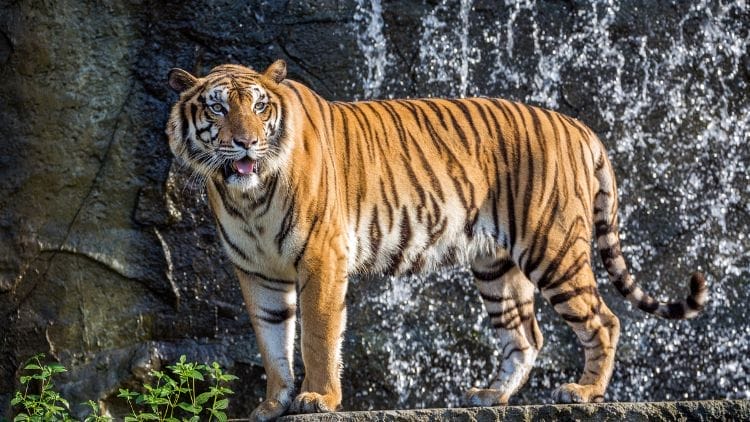
| Scientific Name | Panthera tigris corbetti |
| Special Habit | Apex predator, solitary |
| Place of Origin | Southeast Asia, including Cambodia, Laos, and Vietnam |
| Size | Large, males being larger than females |
| Commonly Found In | Forests and grasslands |
| Lifespan | 15 to 20 years |
| Diet | Carnivorous, primarily hunting deer and wild boar |
| Reproduction | Gives birth to litters of 2 to 4 cubs |
| Conservation Status | Endangered |
The Indochinese Tiger is known for its distinctive dark stripes and is critically endangered due to habitat loss and poaching.
Indri
| Scientific Name | Indri indri |
| Special Habit | Arboreal, leaping between trees |
| Place of Origin | Madagascar |
| Size | Large, resembling a teddy bear |
| Commonly Found In | Rainforests and primary forests |
| Lifespan | 15 to 20 years |
| Diet | Herbivorous, feeding on leaves and fruits |
| Reproduction | Gives birth to single offspring |
| Conservation Status | Endangered |
The Indri is known for its unique vocalizations, producing haunting songs that can be heard for long distances in the dense forests of Madagascar.
Inland Taipan
| Scientific Name | Oxyuranus microlepidotus |
| Special Habit | Terrestrial, highly venomous |
| Place of Origin | Australia |
| Size | Medium-sized, slender |
| Commonly Found In | Arid regions |
| Lifespan | Around 10 years in captivity |
| Diet | Carnivorous, preying on small mammals |
| Reproduction | Gives birth to live young |
| Conservation Status | Least Concern |
The Inland Taipan is considered the world’s most venomous snake, but it is very reclusive and rarely poses a threat to humans.
Insect
| Scientific Name | Various, depending on species |
| Special Habit | Diverse habits, including flying, crawling, and hopping |
| Place of Origin | Worldwide |
| Size | Varies greatly among species |
| Commonly Found In | Every habitat on Earth |
| Lifespan | Varies from a few days to several years |
| Diet | Varied, depending on species |
| Reproduction | Varied, including egg-laying and live birth |
| Conservation Status | Not applicable |
Insects make up the largest and most diverse group of animals on Earth, with over a million known species and potentially millions more yet to be discovered.
Io Moth
| Scientific Name | Automeris io |
| Special Habit | Nocturnal, attracted to lights |
| Place of Origin | North and South America |
| Size | Medium-sized, with distinctive eye-like markings on wings |
| Commonly Found In | Forested areas and gardens |
| Lifespan | Around one week as an adult |
| Diet | Larvae feed on a variety of plants |
| Reproduction | Lays eggs on host plants |
| Conservation Status | Not evaluated |
The Io Moth is named after Io, a figure from Greek mythology, and its striking eyespots on the wings serve as a defense mechanism against predators.
Irish Doodle
| Scientific Name | Canis lupus familiaris (hybrid) |
| Special Habit | Loyal, affectionate, and intelligent |
| Place of Origin | Bred in the United States |
| Size | Medium to large, depending on parent breeds |
| Commonly Found In | Households as a companion dog |
| Lifespan | 10 to 15 years |
| Diet | Standard dog diet, including high-quality dog food |
| Reproduction | Born from Irish Setter and Poodle parents |
| Conservation Status | Not applicable |
The Irish Doodle is a designer dog breed, known for its friendly nature and hypoallergenic coat, making it a popular choice for families with allergies.
Irish Elk
| Scientific Name | Megaloceros giganteus |
| Special Habit | Grazing in open landscapes |
| Place of Origin | Eurasia, including Ireland |
| Size | Large, with impressive antlers |
| Commonly Found In | Grasslands and woodlands |
| Lifespan | Extinct species |
| Diet | Herbivorous, feeding on grasses and shrubs |
| Reproduction | Limited information available |
| Conservation Status | Extinct |
Despite its name, the Irish Elk is not an elk but a giant deer species that roamed Eurasia during the Pleistocene epoch.
Irish Setter

| Scientific Name | Canis lupus familiaris |
| Special Habit | Sporting, hunting, and retrieving |
| Place of Origin | Ireland |
| Size | Medium to large |
| Commonly Found In | Hunting fields and households |
| Lifespan | 10 to 14 years |
| Diet | Standard dog diet, including high-quality dog food |
| Reproduction | Average litter size of 6 to 8 puppies |
| Conservation Status | Not applicable |
Irish Setters are known for their vibrant red coat and friendly temperament, making them excellent family pets and skilled hunting companions.
Irish Terrier
| Scientific Name | Canis lupus familiaris |
| Special Habit | Fearless, often used as a watchdog |
| Place of Origin | Ireland |
| Size | Small to medium |
| Commonly Found In | Households as a companion dog |
| Lifespan | 12 to 16 years |
| Diet | Standard dog diet, including high-quality dog food |
| Reproduction | Average litter size of 4 to 6 puppies |
| Conservation Status | Not applicable |
Irish Terriers are known for their loyalty and determination, making them excellent guard dogs and beloved family pets.
Irish Water Spaniel
| Scientific Name | Canis lupus familiaris |
| Special Habit | Swimming and retrieving in water |
| Place of Origin | Ireland |
| Size | Medium to large |
| Commonly Found In | Lakesides, rivers, and households |
| Lifespan | 10 to 12 years |
| Diet | Standard dog diet, including high-quality dog food |
| Reproduction | Average litter size of 6 to 8 puppies |
| Conservation Status | Not applicable |
The Irish Water Spaniel is known for its curly, water-resistant coat and exceptional swimming abilities, making it a skilled water retriever.
Irish WolfHound
| Scientific Name | Canis lupus familiaris |
| Special Habit | Gentle giants, historically used for hunting wolves |
| Place of Origin | Ireland |
| Size | Extra-large, one of the tallest dog breeds |
| Commonly Found In | Households as a companion dog |
| Lifespan | 6 to 8 years |
| Diet | Specialized large breed dog diet |
| Reproduction | Average litter size of 6 to 8 puppies |
| Conservation Status | Not applicable |
Irish Wolfhounds are known for their friendly nature and immense size, often referred to as “gentle giants,” making them affectionate family members.
Irukandji Jellyfish
| Scientific Name | Carukia barnesi |
| Special Habit | Small size, potent venom |
| Place of Origin | Australian waters, particularly the Great Barrier Reef |
| Size | Tiny, bell diameter around 1 centimeter |
| Commonly Found In | Coastal waters |
| Lifespan | Less than a year |
| Diet | Carnivorous, preying on small fish and plankton |
| Reproduction | Polyp and medusa stages in the life cycle |
| Conservation Status | Not evaluated |
Despite their small size, Irukandji Jellyfish possess one of the most potent venoms in the animal kingdom, causing Irukandji syndrome in humans.
Italian Greyhound
| Scientific Name | Canis lupus familiaris |
| Special Habit | Elegant and slender build |
| Place of Origin | Ancient Egypt, developed in Italy |
| Size | Small, lightweight |
| Commonly Found In | Households as a companion dog |
| Lifespan | 12 to 15 years |
| Diet | High-quality dog food |
| Reproduction | Average litter size of 3 to 5 puppies |
| Conservation Status | Not applicable |
Italian Greyhounds are known for their graceful appearance, often referred to as “miniature greyhounds,” and were favored by nobility throughout history.
Ivory-billed woodpecker
| Scientific Name | Campephilus principalis |
| Special Habit | Pivotal role in forest ecosystems |
| Place of Origin | Southeastern United States |
| Size | Large, with distinctive ivory-colored bill |
| Commonly Found In | Forested areas, particularly hardwood swamps |
| Lifespan | Extinct or critically endangered, if any survive |
| Diet | Insects, particularly wood-boring beetles |
| Reproduction | Limited information due to rarity |
| Conservation Status | Critically Endangered (Possibly Extinct) |
The Ivory-billed Woodpecker, known as the “Lord God Bird,” is believed to be extinct, but occasional unconfirmed sightings fuel hopes of its survival.
Ivy Bee
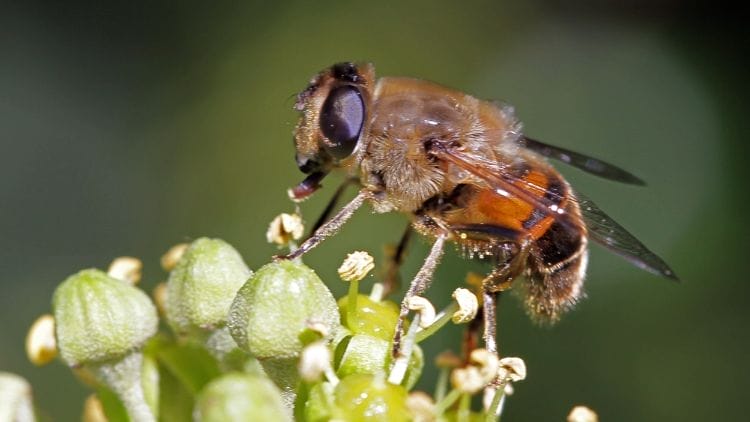
| Scientific Name | Colletes hederae |
| Special Habit | Pollinator, collecting pollen from ivy flowers |
| Place of Origin | Southern and central Europe |
| Size | Small to medium, with distinctive yellow and black markings |
| Commonly Found In | Gardens, woodlands, and meadows |
| Lifespan | Few weeks as adults |
| Diet | Nectar and pollen from ivy flowers |
| Reproduction | Females nest in the ground, laying eggs in cells |
| Conservation Status | Not evaluated |
Ivy Bees are specialized pollinators, contributing to the ecosystem by pollinating ivy flowers, especially in the late summer and early fall when few other bees are active.
To Wrap Up
Meeting with animals that start with I must be an extraordinary adventure for you. Our Earth hosts numerous incredible creatures, so keep your learning journey going! There are many more breathtaking creatures waiting for you to discover ahead!


You May Also Read